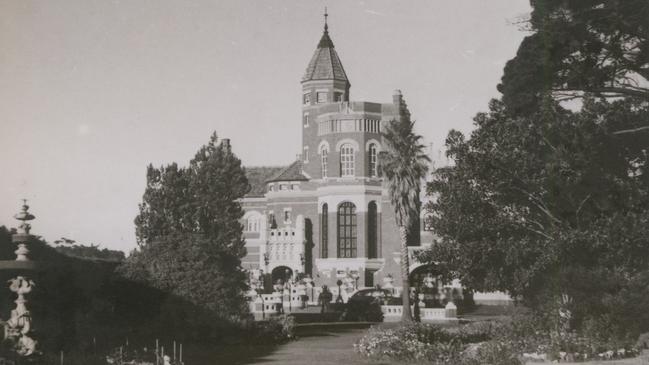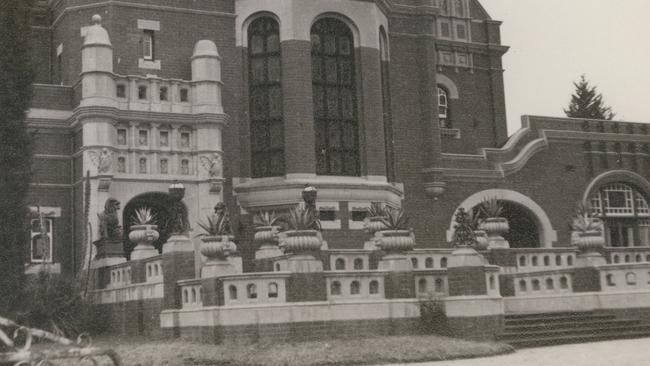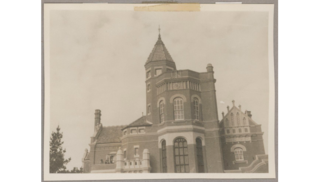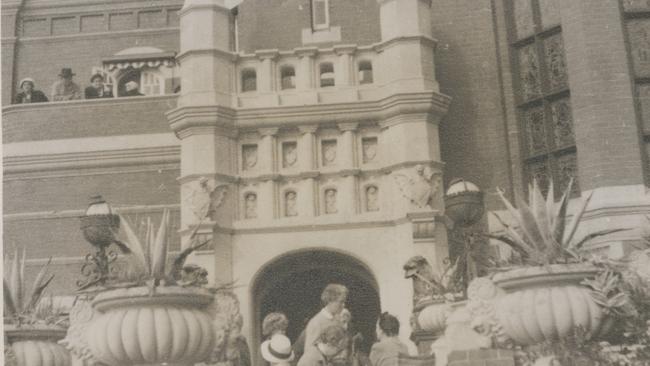How suburban sprawl claimed Brighton mansion
Norwood mansion in Brighton was emblematic of booming Melbourne in the 1880s — grand, lavish and optimistic. But it was a boom of another kind that led to the demise of one of the city’s most stately mansions.

Melbourne
Don't miss out on the headlines from Melbourne . Followed categories will be added to My News.
In many ways, the 1880s in Melbourne resembled Australia in the 1980s – unbounded economic optimism, tycoons with empires that looked great on paper and a sense that the good times would roll on.
And, just as happened when the 1990s dawned, many paper tigers fell on hard times when the 1890s arrived and Melbourne’s Land Boom unravelled.
Melbourne was the world’s richest city, and was known around the globe as a thoroughly modern city that grew from the rivers of gold flowing from Ballarat, Bendigo and a hundred other goldrush towns.
That drove the development of many of the inner and middle suburbs we see today. Land speculators and financiers grew fat as orchards and market gardens were swallowed up for new housing developments.
One of them was Mark Moss, a money man who dreamt of the ultimate Victorian-era home.
He was worth an estimated £500,000 when he embarked on building Norwood for his family on a 16ha site on The Esplanade at Brighton Beach.
This was Moss’ castle – complete with a turret.

It was designed by prominent architect Philip Treeby and boasted an entrance that was guarded by griffins and other mythical creatures, 14 bedrooms, an incredibly ornate main fireplace that was more than 3m wide and almost 5m high and was carved with the words “Come when you mind/And a welcome find”.
It had gas lighting throughout. There were servants’ quarters and a servants’ dining room.
Coloured glass sections adorned every window, but the highlight was a 35-panel stained glass window that depicted various Shakespearean characters.
The mansion even had a gatehouse.
It’s believed many of the fittings and furnishings came from a trip to London the Moss family took in 1888.
The trouble was that the Moss family moved into Norwood as the Land Boom collapsed and the 1890s depression began, and the patriarch’s business interests were already struggling.
A year later, it’s estimated he was more than £250,000 in the red.

The Bank of Victoria, which had financed the construction of Norwood, foreclosed on Moss.
An advertisement in the Argus in September 1893 advertising the sale of furnishings at Norwood described the mansion as “castle-like” and its stained glass window display as “one of the finest in the Commonwealth”.
The house was sold to Richard White, an associate of Moss, and his family.
Moss died in 1901 with £20 to his name, but his son Harry restored the family fortune and established a perpetual trust for the Royal Children’s Hospital that has given the hospital at least $40 million since his death in 1960.
The White family made way for a John James Whitfield, who stayed at Norwood along with his parents for only four years. He sold the property to the Riches family.
Edmund Riches and his siblings Jetter Virginia, Laura and Ben moved into Norwood in 1919 and were the longest occupants of the mansion.
The siblings lived together until the deaths of all but Edmund in the 1940s.
By then, much of the home was unused and the house was not electrified.
Edmund remained in the home and, in 1947, the Johnson family joined him.
Grace Johnson, Edmund’s niece from his younger brother Sydney, her husband Walter and three teenage children including son Roland sold their own luxurious home on Ruckers Hill in Northcote to join Edmund at Norwood, spending much of their time in the servants’ quarters and dining room.
In his book about the property, Norwood: It Changed the Face of Melbourne, Roland
Johnson said the family went to great expense electrifying the home and modernising the kitchen, which had not been renovated since its construction.

Grace cared for Edmund until his death in 1953.
By then, Melbourne’s post-war suburban sprawl was well underway.
The home was an enormous undertaking to maintain and the 16 hectares of land around it became highly valuable.
They resisted an offer to allow the home to become a reception centre, instead opting to demolish the home and subdivide the estate into 12 large suburban blocks.
But before it fell, the family opened the house up to the public, and more than 7000 people toured it before the wreckers moved in.
HOW ST KILDA WENT FROM ELITE TO SKID ROW
THE STRANGE STORY OF COOK’S COTTAGE
GALLERY: MELBOURNE THROUGH THE AGES
The gatehouse was saved, however. It was relocated around the corner to a block in Norwood Ave, and is now known as Belle Vue.
Family friend, former Victorian John Cain, wrote a foreword to Roland Johnson’s book.
He wrote: “Whilst the completion of Norwood survived the end of the land boom, unlike many other contemporary structures and businesses, the house never won the admiration and protection that so many other dwellings and public buildings constructed at this time were able to achieve.
“Architects and others, who later may have fought to save it, seemed not to care about it, and down it came in the 1950s to make way for contemporary development, in keeping with those times.”
